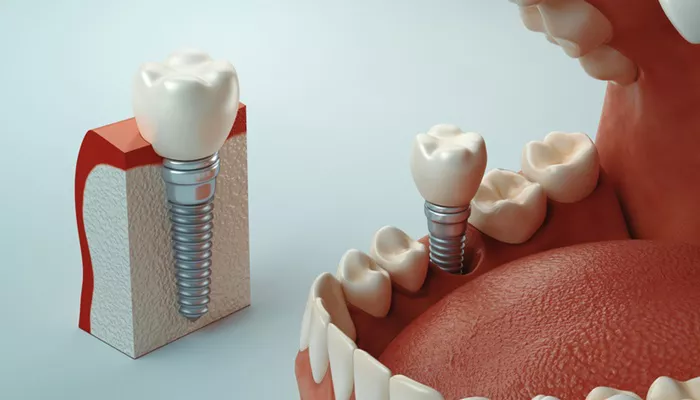Dental implants have become a popular and effective solution for replacing missing teeth. One of the key aspects of their success is the process of osseointegration, where the dental implant fuses with the bone. This process is crucial for the stability and longevity of the implant. Understanding how long this fusion takes and the factors that influence it can help patients better prepare for their implant journey. In this article, we will explore the timeline for osseointegration, factors affecting the process, and tips for ensuring successful fusion.
What Is Osseointegration?
Osseointegration is the process by which a dental implant becomes securely anchored to the jawbone. This involves the implant integrating with the surrounding bone tissue, creating a stable foundation for the artificial tooth. The implant, typically made of titanium or titanium alloys, is biocompatible, meaning it is accepted by the body and promotes bone growth around it.
SEE ALSO: Are Dental Implants Safe And Effective?
Timeline for Osseointegration
The duration for osseointegration can vary depending on several factors. Generally, the process takes between 3 to 6 months, but it can extend beyond this timeframe in some cases.
Initial Healing (1-2 Weeks): After the dental implant is placed, there is an initial healing period where the gums heal around the implant site. During this phase, the implant begins to form a blood clot around it, which is essential for the healing process.
Early Osseointegration (1-3 Months): During the first few months, the bone starts to grow around the implant. This early stage is crucial as it sets the foundation for successful osseointegration. The implant begins to integrate with the bone, although it may not be fully stable yet.
Full Integration (3-6 Months): By 3 months, most implants are well on their way to full integration with the bone. For many patients, the implant is sufficiently fused by this time, allowing for the attachment of the permanent restoration. However, some cases may require a longer period, especially if the patient has certain risk factors or bone quality issues.
Factors Affecting Osseointegration
Several factors can influence how long it takes for a dental implant to fuse with the bone. These include:
Bone Quality and Quantity: The density and volume of the bone at the implant site play a significant role in osseointegration. Patients with dense, healthy bone will generally experience a faster integration process compared to those with compromised bone quality.
Implant Material: Titanium is the most commonly used material for dental implants due to its excellent biocompatibility and ability to integrate with bone. The surface treatment of the implant can also affect how quickly it fuses with the bone.
Patient’s Health: Overall health and medical conditions can impact osseointegration. Conditions such as diabetes or osteoporosis may slow the process. Smoking and poor oral hygiene can also negatively affect healing and integration.
Implant Placement: The technique used during the placement of the implant can influence the healing time. Proper placement and alignment of the implant are essential for successful osseointegration.
Bone Grafting: In cases where there is insufficient bone at the implant site, a bone graft may be needed. The healing time can be extended if a graft is used, as the graft material must first integrate with the existing bone before the implant can fully integrate.
Signs of Successful Osseointegration
Patients and dentists should look for several signs to determine if osseointegration is proceeding as expected:
Stable Implant: The implant should remain stable and not show any signs of movement. A stable implant indicates that the bone is integrating properly.
Healthy Gums: The surrounding gums should be healthy and free of infection. Red, swollen, or bleeding gums may indicate issues with the integration process.
Absence of Pain: While some discomfort is normal after implant placement, persistent pain or discomfort may signal complications.
Tips for Ensuring Successful Fusion
To maximize the chances of successful osseointegration and ensure a smooth process, consider the following tips:
Follow Post-Operative Instructions: Adhere to the dentist’s post-operative care instructions, including medication and oral hygiene practices.
Maintain Good Oral Hygiene: Proper oral hygiene is essential to prevent infections and complications. Brush and floss regularly, and use an antibacterial mouthwash if recommended.
Avoid Smoking: Smoking can impair the healing process and increase the risk of implant failure. It is advisable to quit smoking or at least reduce it during the healing period.
Regular Check-Ups: Attend all scheduled follow-up appointments with your dentist to monitor the healing progress and address any issues promptly.
Healthy Diet: A balanced diet rich in vitamins and minerals can support bone health and promote faster healing.
Conclusion
The process of osseointegration is a critical aspect of dental implant success. While the typical timeline for implants to fuse with the bone ranges from 3 to 6 months, individual factors can influence this duration. By understanding the factors affecting osseointegration and following recommended care practices, patients can enhance the likelihood of a successful implant and enjoy a long-lasting, functional restoration.

